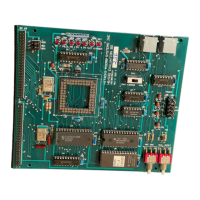Bits 7 to 4—Reserved: These bits cannot be modified and are always read as “0.”
Bit 3—Negative (N): This bit indicates the most significant bit (sign bit) of the result of an
instruction.
Bit 2—Zero (Z): This bit is set to “1” to indicate a zero result and cleared to “0” to indicate a
nonzero result.
Bit 1—Overflow (V): This bit is set to “1” when an arithmetic overflow occurs, and cleared to
“0” at other times.
Bit 0—Carry (C): This bit is set to “1” when a carry or borrow occurs at the most significant bit,
and is cleared to “0” (or left unchanged) at other times.
The specific changes that occur in the condition code bits when each instruction is executed are
listed in appendix A.1 “Instruction Tables.” See the H8/500 Series Programming Manual for
further details.
Page Registers: The code page register (CP), data page register (DP), extended page register
(EP), and stack page register (TP) are 8-bit registers that are used only in the maximum mode. No
use of their contents is made in the minimum mode.
In the maximum mode, the page registers combine with the program counter and general registers
to generate 24-bit effective addresses as shown in figure 3-4, thereby expanding the program area,
data area, and stack area.
37
Downloaded from Elcodis.com electronic components distributor

